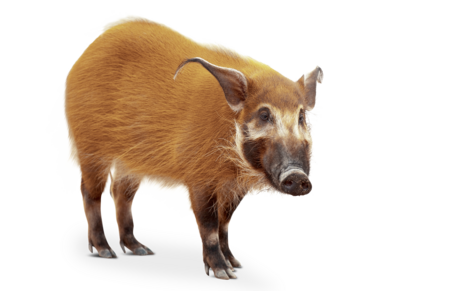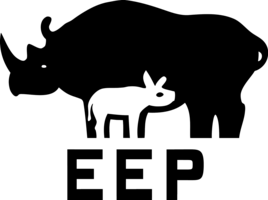Red river hog
Potamochoerus porcus
- Family
- True pigs (Suidae)
- Weight
- 45 – 130 kg
- Habitat
- Forests, bushlands, savannahs, marshlands, steppes
Life in the sounder
Red river hogs live in groups called sounders that consist of a pair and its offspring. Commonly, some families join together. After a gestation period of about four months, the female gives birth to 3 – 4 piglets in a large grass nest. Both the male and female participate in the raising of the young. Juvenile males must leave the group before reaching maturity, while the females are allowed to stay.

Thriving community
Red river hogs are omnivores – they eat almost anything. Their diet consists of seeds, roots, fruits, tubers, grasses, insects, eggs, carrion and even aquatic plants. Their foraging habits include following a horde of monkeys to pick up fallen fruit remnants. The populations in the wild have grown rapidly as they rarely encounter their natural predator, the leopard.
Red river hog piglets are born with yellow stripes that serve as camoufl age in the bushes to avoid detection from predators. The stripes fade after about six months.
Distribution


Hellabrunn Zoo participates in the European Endangered Species Programmes